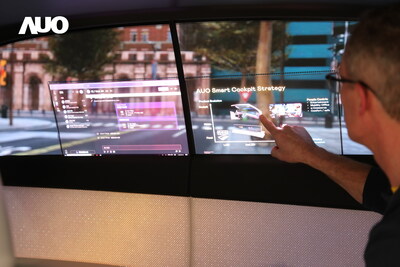
In recognition of the 40th anniversary of Earth Day, Richard Canny, CEO of pioneering electric car company THINK, is speaking out to set the record straight on electric vehicles (EVs). Canny’s list of the top ten EV myths busted is designed to draw attention to electric vehicles as a clean, environmentally responsible choice for personal mobility, just like Earth Day was designed to inspire awareness and appreciation for the Earth’s environment.
Journalists and electric vehicle advocates will drive the THINK City electric car near the U.S. Capitol for Earth Day tomorrow and Friday. THINK City is on the road in Europe today and goes on sale in the U.S. later this year.
Like all new technologies, misconceptions abound in the EV space. Here are Canny’s top 10 EV myths, busted.
1. “You are just moving the pollution out of the cities to the countryside.” – Busted: Electric vehicle motors are three-to-five times more efficient than gasoline-powered vehicles.. While it’s best to power EVs from renewable energy sources (which are growing quickly), the efficiency of EVs makes them cleaner, producing less carbon, under any situation – even when they are charged using coal-fired electricity.
2. “Customers will never buy a car with less than a 200 mile range.”
– Busted: So-called ‘range anxiety’ diminishes when people get used to driving EVs on a daily basis. It’s just like charging a cell phone overnight. You plug it in, and in the morning it’s ready to go, fully charged. As more EVs hit the road, businesses and cities will add charging points to encourage EV use. And THINK recently announced a new standard for fast charging—zero to 80% charged in just 15 minutes– to help cover those rare situations when an EV will be needed to cover more than 100 miles in a single day.
3. “The battery won’t last.”
– Busted: EV batteries are designed to last at least 10 years and more than 100,000 miles. THINK has cars on the road in Europe with batteries approaching the 10-year mark and brings that experience to modern Lithium ion batteries to ensure they meet or exceed that target.
4. “You’ll need to build a lot more power plants.”
– Busted: Actually, there’s enough off-peak electricity in the U.S. to power 79% of U.S. driving demand. As more EVs are deployed, it’s important to ensure that the smart-charging (time-based charging management) and vehicle-to-grid connectivity progresses as well. A connected network of millions of micro energy storage devices – which EVs would become –provides significant opportunities to improve the stability and performance of electric grids and better balance peak demand.
5. “We’re going to run out of Lithium – and isn’t it poisonous?”
– Busted: Lithium carbonate today comes from dried salt lakes in South America (Chile, Argentina and Bolivia) and China. There are also other huge sources for lithium, although these are more expensive to develop. Lithium can even be extracted from salt water and projects are under way to do this. The industry will not have a shortage of lithium for the next decade. It is also possible that new battery technologies will be based on other light metals like Zinc or Nickel.
Lithium from used batteries will be recycled in dedicated recycling plants. Lithium batteries contain no poisonous heavy metals like lead in lead-acid batteries or cadmium in NiCd batteries.
6. “The infrastructure has to come first.”
– Busted: In our experience working with more than 20 cities across Europe, the best way to deploy EVs is to get cars on the road first, then add infrastructure. If there’s no EVs to use those plugs and parking spots, people see it as wasteful. We think infrastructure is a small part of good policy at a federal, regional and local level to support EV early adopters.
7. “They’re not safe.”
– Busted: Highway-certified EVs like the THINK City meet all the same safety and crash test requirements as regular production cars with some important extras. For example, new European Union regulations require EVs to conform to the European CE electrical standards for plugged-in appliances, with the toughest electrical safety requirements. THINK City is the first to meet those requirements.
8. “The technology is too complicated.”
– Busted: A modern electric car has only about five main moving parts compared with hundreds in an internal combustion engine. There are no regular visits to the dealership for an EV. No oil changes, no filters – even brake pads last two-to-three times longer than in conventional cars, because EVs like the THINK City use regenerative braking to recapture the energy that would otherwise be lost while braking. Your first trip to the dealership with an EV for scheduled maintenance is at 40,000 miles to check the brake pads. Eventually, you’ll need new wiper blades and tires. But that’s about it!
9. “Fast charging EV batteries in 15 minutes will wear them out quickly.”
– Busted: Modern prismatic lithium batteries can be developed with fast-charging in mind – like THINK’s EnerDel battery solution. The critical technology is in the cell design to manage battery temperature during charging. Limiting fast charging to the 0-80%range also protects battery life. THINK’s view is that 95%or more of all EV miles will be driven on EVs charged during overnight off-peak periods when electricity is cheaper and readily available. Fast charging locations provide reassurance and peace of mind for those occasional days where more than 100 miles are required.
10. “Plug in hybrids represents the best solution.”
– Busted: Carrying around the extra weight and cost of two powertrains makes little sense. In some ways, a ‘hybrid garage’ (where one car is an EV and the other a relatively fuel-efficient ‘normal car’) is probably most economical for a typical family For a small urban commuter car like the THINK City, an EV drive with a relatively small battery pack and low weight makes the best sense. As plug-in hybrids get bigger and heavier, they need more batteries and stronger gas- or diesel-powered generators or engines. It becomes a ‘vicious circle’ of more cost and more weight to achieve acceptable range and performance in both modes.
THINK CEO Richard Canny is a motor industry veteran with 25 years previous experience at Ford Motor Company. He has held key international leadership roles across every major automotive manufacturing continent, with positions including President-Ford South America and Director of Strategic Planning for Ford globally.
THINK City is a purpose-built, all-electric car designed for urban environments. It is capable of highway speeds and can travel more than 100 miles on a single charge with zero local emissions. THINK City is currently in production in Finland and sold in select European markets. Sales in the U.S. will begin later this year. The company recently announced plans to begin manufacturing the THINK City in Elkhart, Ind. beginning in early 2011.
THINK is a pioneer in electric vehicles and a leader in electric vehicle technology, developed and proven over 19 years. It is one of the few companies that are currently producing highway-ready, fully electric vehicles for sale – the THINK City. THINK is also a leader in electric drive-system technology, and was the first to offer a modular and flexible EV drive-train solution in the business-to-business sector. With its Scandinavian origins and sustainability mindset, THINK is one of the most carbon efficient car companies in the world.
THINK has established a U.S. subsidiary – THINK North America, a stand-alone business that will include manufacturing, product development, sales and distribution. More information about THINK is available at www.thinkev.com














More Stories
Flexible Magna Manufacturing Solutions: The Key to Success in the Automotive Industry
DuPont technology helps improve EV battery durability and performance
Automotive Industries (AI) Newsletter October 2024